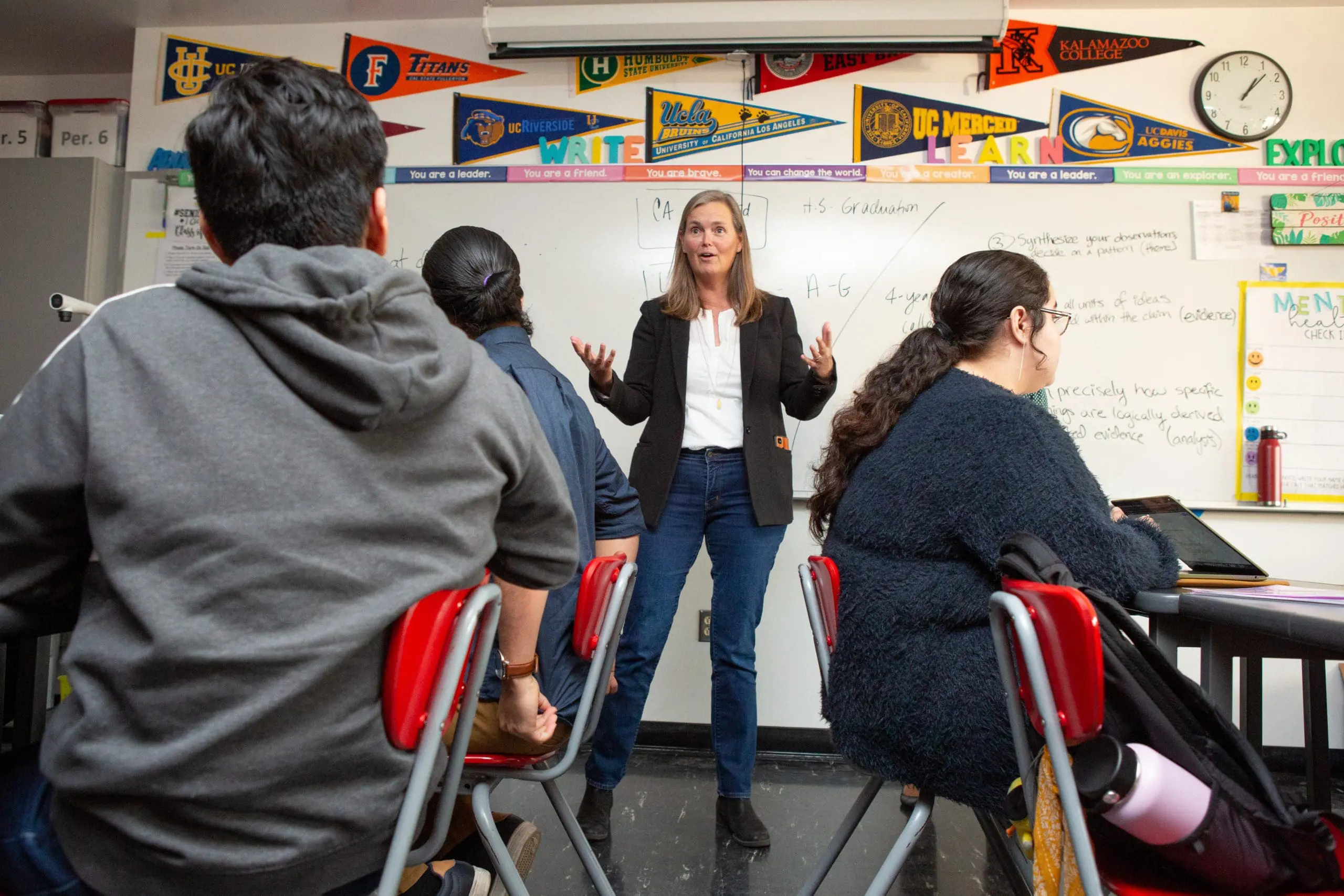High school students must make important life decisions about their postsecondary pathways, which may include either college enrollment, entry into the workforce, or a mixture of the two. They are bombarded with information coming from all directions—including family, teachers, friends, college marketing pamphlets, and Google—and even still, students have questions about program quality, affordability, and career pathways. Counselors play an essential role in advising students on their post-high school options—but counselors often advise students on these options without having access to complete data or insights about postsecondary and workforce outcomes and pathways. Without complete data—data that is timely, includes education and workforce outcomes, and is disaggregated by different student populations—counselors rely on anecdotes or self-reported data from graduating students, and as a result, must lean on incomplete or biased information. To better support students, especially those systemically underserved in pursuit of their college and career goals, counselors need access to better data.
What We’ve Heard from Counselors and Students
High schools are placing greater emphasis on college and career readiness, noting the importance of supporting students’ success after graduation. In recent focus groups, we heard from counselors that despite school leaders prioritizing students’ college and career readiness, they did not have the information necessary to know whether or not they were preparing their students for success after high school. Similarly, we heard from current high school students and recently graduated college freshmen that want data about career pathways, the cost of college, financial aid, and more. Many of these students—especially those who did not have the support of private counselors or an afterschool program—wanted clearer, timelier information, including more substantial guidance from their counselors on their college and career options.
The Equity Implications
While counselors need access to more data to support all students, this issue can be seen even more acutely among students of color. Students feeling as though they are not getting the support and information they need, combined with counselors not having access to complete data, can create profound equity implications for Black and brown students, especially those from low-income backgrounds.
Incomplete data too often steers marginalized students toward college and career opportunities that could leave them worse off, including high-cost, low-value postsecondary institutions or programs. Schools have operated as pipelines to either fruitful college and career options or stagnant employment and wages. For many, the pipeline a student was tracked into has depended on educators’ perceptions of the student’s “ability,” which was laced with racial, gender, and socio-economic prejudices. As a result, Black, Indigenous, Latinx individuals, and individuals from low-income backgrounds are overrepresented in jobs with low professional and salary growth potential.
Data alone will not rectify the impact of discriminatory policies and practices. However, without data, the capacity to use it, and a change in data culture, identifying and addressing existing inequities, including unequal pathways taken by students of color and students from low-income backgrounds, is much more difficult. A more connected data system that can provide insights about program quality and college and career pathways back to students, and their counselors can help students avoid college and career outcomes that contribute to these opportunity and racial wealth gaps. Education leaders risk reinforcing these gaps within postsecondary education and the workforce when counselors use incomplete data or biased information to advise students. Education leaders must understand which information is needed to support students navigating their post-high school journeys while also supporting counselors’ capacity to access and use data. With more complete data, counselors can meet the needs of students more effectively and advise them on pathways.
States Must Provide Solutions
State education leaders should consider the data needs of counselors and students, especially as they establish and work towards statewide goals to improve the education and workforce success of all residents. Decisionmakers should consider the following actions to fill the information gaps that exist for students and counselors, and give counselors the tools they need to support students:
- Engage with students and counselors about their data needs to understand what information gaps exist. It is vital to engage these groups to ensure that the tools and resources created meet the intended users’ needs. State education leaders are in a position to create clear and consistent communication channels between themselves and students and educators.
- Evaluate the data, tools, and supports already available to leverage existing resources and understand where investments need to be made. This step is essential for understanding the constraints that make it difficult for students and counselors to use any existing data resources.
- Communicate with other system leaders to improve data connections, access, and analysis. District and school leaders can communicate with state education agencies (SEA) to fill in gaps related to data needs and support. SEA leaders can share across agencies to improve data connections across education and the workforce and to improve data access policies so that educators at the local level get the data they need.
- Improve the data culture within schools to use postsecondary and workforce data to improve advising and programming. It is important to encourage educators and students throughout the school to use either data available through secured access or publicly available data to inform their day-to-day conversations with students.
Access to data and the capacity to use it will give counselors the tools they need to support all students—including identifying and addressing existing inequities, and steering students away from the unequal pathways too often taken by students of color and students from low-income backgrounds.


